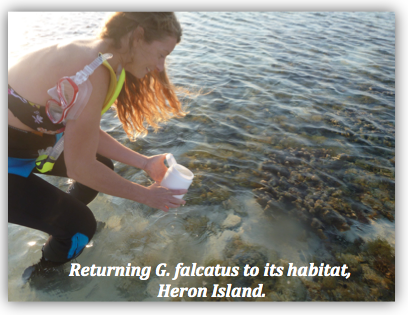Acknowledgements
One of the countless joys of working on Heron Island was the opportunity to work with an animal with such extraordinary adaptations. Its vision capabilities, lightening reflexes, awareness of its surroundings at all times were astounding. We were struck by how sentient this little crustacean was. Too often, it seems we separate the natural world equally into vertebrate and invertebrate (like us and not), and often downplay complexity within the evolutionary path of those not 'like us'. Complexity aside, even numerically this superficial dichotomy is so unbalanced! Indeed, invertebrates currently comprise some 1.5 million species currently known to science, although that number is probably only the tip of the iceberg.

Thus, aquiring even a preliminary understanding of marine invertebrates in a place so rich in biodiversity – so rich that a photo of the island was launched with the Voyager spacecraft – was a remarkable experience.
So, thank you to our tireless and extremely clever lecturers: Professor Bernie Degnan, Professor Greg Skilleter (particularly for his breadth of ideas and boundless enthusiasm in choosing the mantis shrimp), Associate Professor Sandie Degnan and our tutors: Andrew Calcino (especially for his inventive suggestions with plasticine), Jaret Bilewitch and Jabin Watson. Thank you also to my colleagues Storm Martin and Gustavo Alves for risking digits in collecting the stomatopods!
I’d also like to express gratitude to those researchers and enthusiasts who granted permission to use figures, images, information and videos about the mantis shrimp. Thank you to: Marjorie Reaka, Thomas Claverie, Michael Bok, Tim Grohrock, Shane Ahyong and to the journals on behalf of several more authors AAAS (Mazel et al., 2007) JEB (Porter et al., 2010), PALASS (Haug et al., 2010) and PNAS (Reaka et al., 2007). Finally, thank you to Shane Ahyong of the Australian Museum for confirming my identification of the 3 species collected on Heron Island.
|